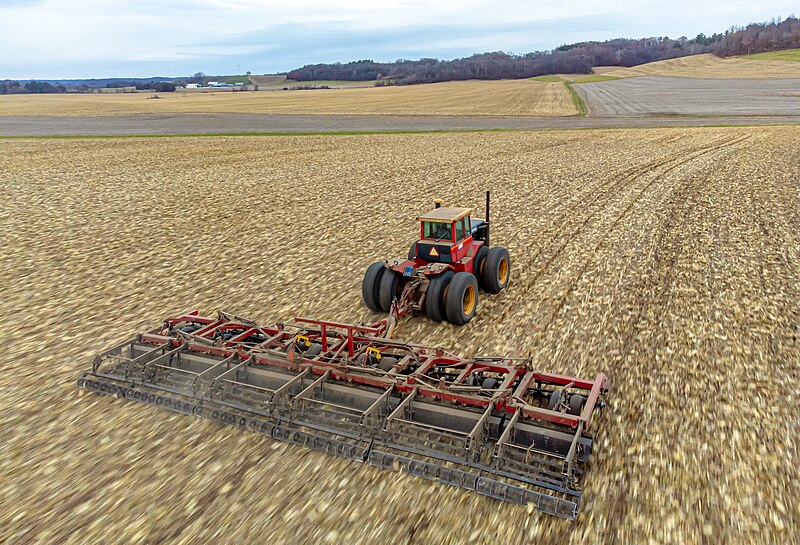Tillage Farming: A Deep Dive into the Plough's Past, Present, and Future

So, you're curious about tillage farming? Fantastic! Prepare yourself for a rollercoaster ride through the history, techniques, and controversies surrounding this age-old agricultural practice. Let's get this bread – or rather, let's get this soil ready for planting!
What in the World is Tillage Farming?
Tillage farming, in its simplest form, is the process of mechanically manipulating the soil before planting. Think of it as giving your future crops a luxurious spa day – but instead of cucumber slices, we're talking about turning over the soil. This involves a variety of methods, from plowing and disking to harrowing and cultivating. The goal? To create a seedbed that's perfect for planting, improving drainage and aeration, and controlling weeds. Seems pretty straightforward, right? Well, buckle up, buttercup, because it's a bit more nuanced than that.
A Brief History of Tillage: From Oxen to Tractors
Humans have been tilling the soil for millennia – seriously, we're talking thousands of years! Imagine our ancestors, back in the day, painstakingly turning the earth with simple hand tools. Then came the plow, a game-changer that revolutionized agriculture. The invention of the plow allowed farmers to cultivate larger areas, leading to increased food production and the rise of civilizations. Fast forward to the present day, and we have tractors pulling massive plows, capable of tilling hundreds of acres in a single day. Talk about technological advancements!
Types of Tillage Farming: A Ploughing Panoply
Tillage isn't a one-size-fits-all kind of deal. There's a whole spectrum of techniques, each with its own advantages and disadvantages. Let's explore a few:
- Conventional Tillage: This is the "heavy hitter" – involving deep plowing that completely inverts the soil. It's effective for weed control and soil aeration, but it can also damage soil structure and lead to erosion.
- Conservation Tillage: This approach minimizes soil disturbance, leaving crop residue on the surface. It's gentler on the soil, reducing erosion and improving soil health. Think of it as a gentler, more eco-friendly approach.
- No-Till Farming: As the name suggests, this method eliminates tillage altogether! Seeds are planted directly into the soil without any prior plowing or disking. This is a huge step towards sustainable agriculture.
The Pros and Cons of Tillage Farming: Weighing the Options
Like any agricultural practice, tillage farming has its ups and downs. Let's break it down:
Pros of Tillage Farming
- Improved seedbed preparation for planting.
- Enhanced water infiltration and aeration.
- Effective weed control (particularly with conventional tillage).
- Improved nutrient availability in some cases.
Cons of Tillage Farming
- Soil erosion and degradation.
- Loss of soil organic matter.
- Increased fuel consumption and greenhouse gas emissions.
- Potential damage to soil structure and beneficial organisms.
Tillage Farming and Soil Health: A Delicate Balance
The impact of tillage farming on soil health is a hot topic. While it can improve certain aspects of soil health in the short term, long-term effects can be detrimental. Excessive tillage can disrupt soil structure, reducing water infiltration and increasing erosion. It can also lead to a loss of soil organic matter, which is crucial for soil fertility and overall health. Sustainable tillage practices, such as conservation tillage and no-till farming, are gaining popularity as farmers recognize the importance of protecting soil health.
The Future of Tillage Farming: Adapting to Change
With growing concerns about climate change and soil degradation, the future of tillage farming is likely to involve a shift towards more sustainable practices. Conservation tillage and no-till farming are becoming increasingly important, offering ways to minimize soil disturbance and improve soil health. Technological advancements, such as precision agriculture, can help farmers optimize tillage practices, reducing their environmental impact while still achieving high yields. The future isn't about abandoning tillage entirely, but rather about doing it smarter and more sustainably.
Tillage Farming: A Conclusion
Tillage farming has been a cornerstone of agriculture for centuries, but its future is evolving. As we face challenges like climate change and soil degradation, the need for sustainable practices becomes more urgent. The shift towards conservation and no-till methods is not simply a trend; it's a necessary adaptation. By understanding the pros and cons, and embracing innovative techniques, we can ensure that tillage farming remains a vital part of food production while safeguarding our planet's precious resources.
Frequently Asked Questions
- Q: Is tillage farming necessary? A: Not necessarily. No-till farming proves that you can achieve high yields without any tillage at all. However, the best approach depends on factors like soil type, climate, and crop. It's all about finding the right balance.
- Q: What are the environmental impacts of tillage farming? A: Excessive tillage contributes to soil erosion, loss of organic matter, and increased greenhouse gas emissions. It also disrupts soil biodiversity.
- Q: How can I reduce the environmental impact of my tillage practices? A: Consider adopting conservation tillage techniques, reducing tillage intensity, and incorporating cover crops to protect the soil.
- Q: What are the best tools for tillage farming? A: The optimal tools depend heavily on the type of tillage you're employing. For conventional tillage, plows and disks are common. Conservation tillage often utilizes chisel plows and other less intensive tools. No-till requires specialized seed drills.
- Q: Is tillage farming suitable for all climates and soil types? A: No, certain soil types and climates are better suited to different tillage approaches. For example, no-till farming might be challenging in areas with heavy rainfall or poorly drained soils.